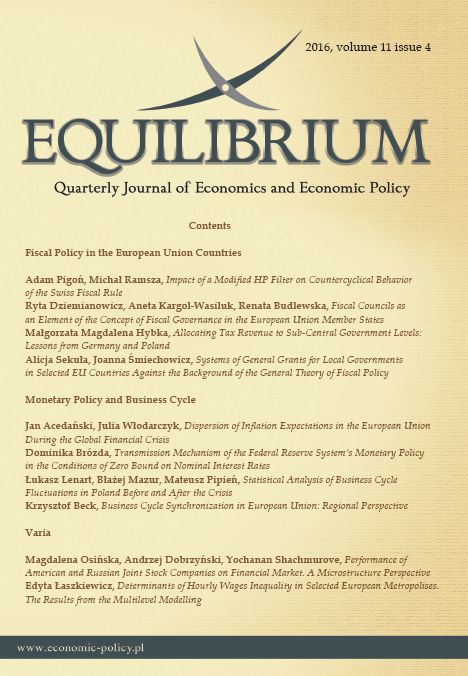TRANSMISSION MECHANISM OF THE FEDERAL RESERVE SYSTEM’S MONETARY POLICY IN THE CONDITIONS OF ZERO BOUND ON NOMINAL INTEREST RATES
TRANSMISSION MECHANISM OF THE FEDERAL RESERVE SYSTEM’S MONETARY POLICY IN THE CONDITIONS OF ZERO BOUND ON NOMINAL INTEREST RATES
Author(s): Dominika BrózdaSubject(s): Economy, National Economy, Financial Markets
Published by: Instytut Badań Gospodarczych
Keywords: monetary policy; interest rate; transmission mechanism of monetary policy; zero lower bounds
Summary/Abstract: The experience of Japan from the 90s of the twentieth century and the recent global financial crisis has shown that the zero lower bound problem has ceased to be a theoretical curiosity and became the subject of intense scientific discussion. This issue is closely linked with John Maynard Keynes’s liquidity trap. The phenomenon of the zero lower bound is very controversial. Not all economists agree that it may restrict the effectiveness of the central bank’s actions. The aim of the article is to present the views of economists on this transmission mechanism of monetary policy under the zero lower bound. The paper also attempts to evaluate the effectiveness of the Federal Reserve System’s monetary policy at zero nominal interest rates.
Journal: Equilibrium. Quarterly Journal of Economics and Economic Policy
- Issue Year: 11/2016
- Issue No: 4
- Page Range: 751-767
- Page Count: 17
- Language: English

